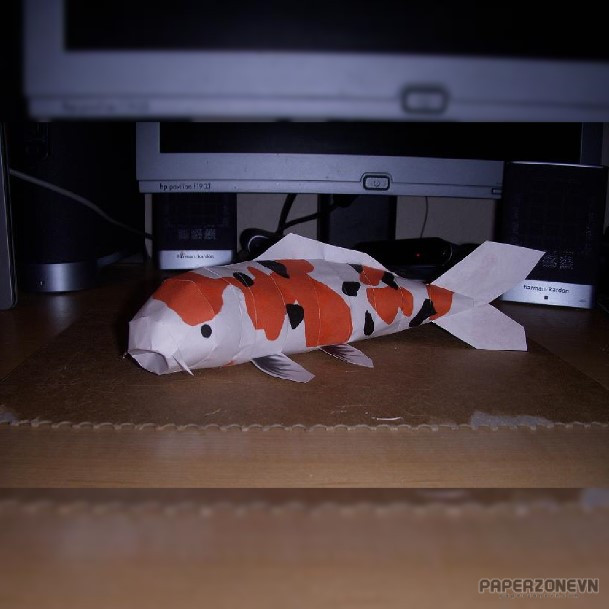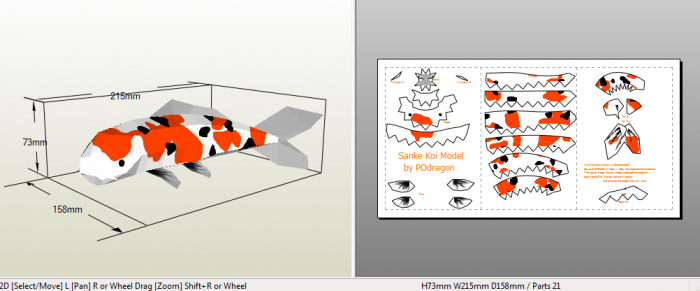- Thumbnail
-

- Resources
- Received from the internet.
- Author
- POdragon
- Printed File Format
- PDO
- Page(s)
- 3
- Part(s)
- 21
- Instruction Format
- PDO
Sanke Koi fish Papercraft
The Amur carp (Cyprinus rubrofuscus) is a member of the cyprinid family species complex native to East Asia. Amur carp were previously identified as a subspecies of the common carp (as C. c. haematopterus), but recent authorities treat it as a separate species under the name C. rubrofuscus.[9] Amur carp have been aquacultured as a food fish at least as long ago as the fifth century BC in China. The systematic breeding of ornamental Amur carp began in the 1820s, in Ojiya and Yamakoshi in the Niigata Prefecture (located on the northeastern coast of Honshu) in Japan. Selective breeding gave rise first to red carp, then to pale blue Asagi and white, red, and yellow Bekkou. The Sarasa variety, with a red on white pattern, was created around 1830. Later, a yellow-based Ki utsuri variety was born. From this original handful of koi varieties, all other Nishikigoi varieties were bred, with the exception of the Ogon variety (single-colored, metallic koi), which was developed relatively recently.


The Amur carp (Cyprinus rubrofuscus) is a member of the cyprinid family species complex native to East Asia. Amur carp were previously identified as a subspecies of the common carp (as C. c. haematopterus), but recent authorities treat it as a separate species under the name C. rubrofuscus.[9] Amur carp have been aquacultured as a food fish at least as long ago as the fifth century BC in China. The systematic breeding of ornamental Amur carp began in the 1820s, in Ojiya and Yamakoshi in the Niigata Prefecture (located on the northeastern coast of Honshu) in Japan. Selective breeding gave rise first to red carp, then to pale blue Asagi and white, red, and yellow Bekkou. The Sarasa variety, with a red on white pattern, was created around 1830. Later, a yellow-based Ki utsuri variety was born. From this original handful of koi varieties, all other Nishikigoi varieties were bred, with the exception of the Ogon variety (single-colored, metallic koi), which was developed relatively recently.


Sponsored: Google Advertising

